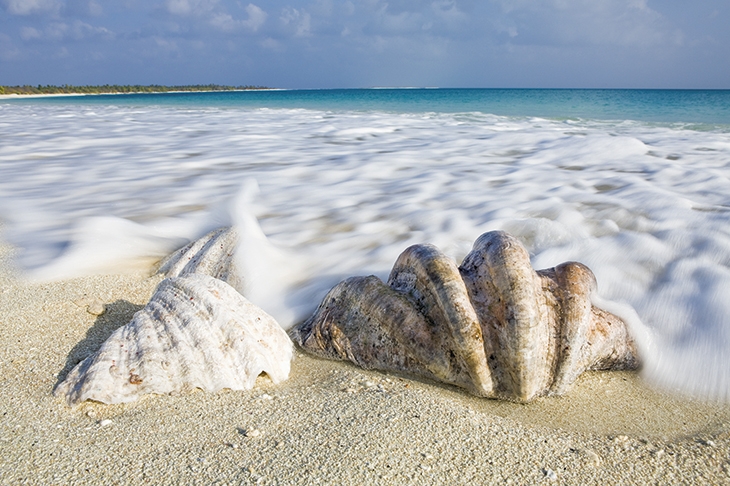Ignoring the padlocked gate, my six-year-old son Nicholas and I climbed through a break in the metal fence and pushed into the mesh of undergrowth. This was the site of Ducker, the open-air swimming pool that once belonged to Harrow School in London. Here the young Winston Churchill romped (naked, since trunks were for prefects), as, in his own day, did my dad. When I arrived at Harrow in the 1980s, the pool — far bigger than Tooting Bec Lido, which is now the UK’s largest — had just been abandoned. It was covered with graffiti, the haunt of skateboarders.
Returning in 2021, I looked for changes wrought by three decades of neglect. Google Maps showed a J-shaped artificial lake, 98ft by 492ft. But when I switched to ‘satellite view’, the photo was not of a lake but of a dark-green copse. The old pool was hard to find beneath the tangle of vegetation. It was filled with silt and swamp, out of which stretched thick trees, whose tops were home to the murmur and clatter of pigeons. Nicholas, who was sporting an eye-patch and carrying a plastic hook (which we later managed to lose among the brambles) wanted to play pirates. We did that. But the real reason we were there was because I had been inspired by Cal Flyn’s extraordinary Islands of Abandonment.
Just when you thought there was nowhere left to explore, along comes an author with a new category of terrain — not scenes where man has never trod, but places where he has been and gone. There is a special quality of loneliness in these fresh ruins. As well as an explorer, Flyn, who writes for Granta and the Guardian, is a psychogeographer, attuned to the spirit of hopeless places, and an ecologist, too, her theme being that these desolate spots are not, in fact, as hopeless as they seem. As she travels from California to Tanzania to Ukraine and home again, her message is that, however much of a mess we’ve made, nature stages a comeback.
In 1954, at Bikini Atoll in the Pacific, the American military detonated a nuclear bomb 7,000 times as powerful as the one that flattened Hiroshima. The result was so shocking that atmospheric testing was banned. Yet a half-century later, scientists visited the atoll to find that in the toxic waters had grown up one of the most impressive coral reefs on the planet. In the 1980s, a strip of land between Iran and Iraq was planted with mines. A no-go area for men, this impromptu nature reserve has since become a sanctuary for the endangered Persian leopard. These graceful creatures are the size of humans, but because their weight is distributed over four feet, they fail to trigger the devices.
For reasons of safety or budget or both, Flyn doesn’t visit all the places she writes about. But the dozen sites she sees, each of which forms a chapter, she describes with dazzling flair. Just occasionally, she gets pretentious. ‘Impossible not to think of T.S. Eliot,’ she declares while clambering over a slag heap in Scotland. But in general her prose is as pragmatic as it is poetic. On Inchkeith, in the Firth of Forth, she notes the ‘shags bedding down on the spray-spattered rocks’ and ‘gray seals heaving themselves up concrete slipways’. On Swona, off the northernmost point of Scotland, she writes, ‘Rain lashes the windows to one side, salt sprays the other. Days pass. Weeks pass. Months. Years.’
By the ecological process of succession, an abandoned landscape is reclaimed by weeds, then shrubs, then softwood trees, then hardwood. That’s what has been happening to Harrow’s open-air pool over the past three decades — the same time period during which, as Flyn reveals, 155 million acres of Soviet farmland have been abandoned since the fall of communism. This swath of slow but steady reforestation matches the area of the Amazon rainforest lost to loggers in an equivalent time frame. Flyn is careful not to say we can relax about the scale of damage we have done, and continue to do, to the environment. But clearly, nature’s capacity for recovery must be a part of the picture.
When humans have made a place uninhabitable, the benefits of their absence outweigh the damage caused. James Lovelock suggested we should deliberately pollute parts of the world so badly that humans cannot go near them, with the consequent rewards for nonhumans. This makes me speculate as to whether our disgraceful mismanagement of the planet may not in fact be an unconscious act of species altruism. At this point, one way to save the Earth could be to kill ourselves. Swiftly the streets of London would fill with silt and swamp. Trees would sprout in Trafalgar Square. As much as any of Flyn’s islands of abandonment, our home would become a place of loneliness and hope.
This article was originally published in The Spectator’s June 2021 World edition.


















